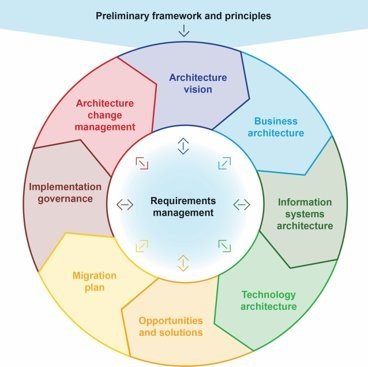Through a dynamic partnership, PATH and Tanzania’s Ministry of Health pioneered an enterprise architecture approach that maps the current data use ecosystem and its potential future state to ensure digital tools reach their full potential to improve health outcomes.
Problem Definition
Design and Development
Program Implementation
Digital Health

Mr. Sadick Masome, the lead for the Tanzania Health Enterprise Architecture documentation team, leads a discussion in the Tanzania Health Enterprise Architecture meeting in Morogoro, Tanzania. Photo: PATH
The challenge
Currently, Tanzania has more than 160 digital health or health-related systems, many of which cannot connect with each other because of different business procedures, data definitions, and IT architecture. This leads to inconsistencies in reporting, in which different levels of the health system report different numbers for the same data points. At the same time, health workers must often enter similar information into duplicative systems.
This leads to a time-consuming and burdensome data collection process for health workers and misaligned health dashboards for managers monitoring disease trends, coverage rates, and patient histories. Ministry of Health officials, implementers, and software developers require a clear snapshot of Tanzania’s complete web of digital and data tools to map how they connect, where they don’t, and where there may be gaps or a need for future digital systems.
The approach
Tanzania’s Health Enterprise Architecture (TZHEA) is a systematic approach to charting these digital solutions. Like the architectural blueprint of a house, it provides a floor plan or overview of how the country’s health sector currently operates, including what health information systems exist, how they interface, and where there may be gaps in services.
To develop the TZHEA, the DUP initiative assembled a task team and subject matter experts representing the health system’s six main building blocks: service delivery, health commodities, health financing, human resources, health information systems, and leadership and governance.
The blueprint defined guiding principles, data standards, governance mechanisms, and related digital health solutions needed to facilitate health information exchange within Tanzania's digital health ecosystem. It will help to reduce duplication in Tanzania’s digital landscape, which contains more than 160 digital health solutions.
The blueprint has four main domains:
- Business architecture involves mapping the health sector’s existing business processes—the workflows and services that different health actors are responsible for—to determine how they can be improved. It helps to answer key questions like: What services are provided? What are the health sector’s processes? How do they currently work, and how can they be improved?
- Data architecture maps how data flows throughout the health sector to improve the availability of health data and the quality of health services. Data architecture helps to answer questions like: How is health information shared between data users? How can digital systems facilitate better sharing of information?
- Applications architecture maps the different software applications in use across Tanzania’s health system and how they interact within the health sector. This component answers questions like: How could different applications exchange data better? Could some applications be streamlined to avoid duplication?
- Technology architecture maps how technology will facilitate interactions between health sector functions, services, processes, and applications. It answers questions like: What technology could best serve multiple applications and user scenarios?
New guidance and policies are only effective if there’s a mechanism to enforce them. In keeping with the National Digital Health Strategy (2019–2024), the blueprint established a TZHEA subcommittee to ensure the use and application of defined principles, standards, and guidelines within the health sector.
“The enterprise architecture will offer a big-picture view of the limitations and strengths of Tanzania’s health information systems. With this blueprint for change, we’ll be able to unlock the true potential of digital health.”— Eden Tarimo, Digital Health Lead, Data Use Partnership, PATH

Tanzania’s Health Enterprise Architecture (TZHEA) is a systematic approach to charting digital solutions. It provides guidance on how health sector systems and tools should operate to support data-driven decision-making.
The solution
Tanzania’s Health Enterprise Architecture provides guidance on how health sector systems and tools should operate to support data-driven decision-making and improve quality of care. The blueprint identifies important interrelationships between Tanzania’s digital systems and aligns components of these systems to avoid fragmentation, duplication, and a lack of interoperability. The TZHEA can then be used to determine how to strengthen and optimize the country’s national digital health ecosystem, so that Tanzania’s many different ministries, departments, and donors are all working toward the same vision.
The impact of Tanzania’s Health Enterprise Architecture
The TZHEA will ensure the country’s digital health systems are all working together in concert. In the coming months, PATH and the government of Tanzania will use this blueprint to assess each digital solution to determine which are additive and which should be merged, phased out, or updated to contribute to the strongest possible digital health system.
The result will be a more sustainable and connected digital ecosystem, leading to data-informed health workers and more positive patient experiences. As one of the first countries in the world to apply the enterprise architecture approach to health information systems, Tanzania is paving the way for other governments interested in the innovation.